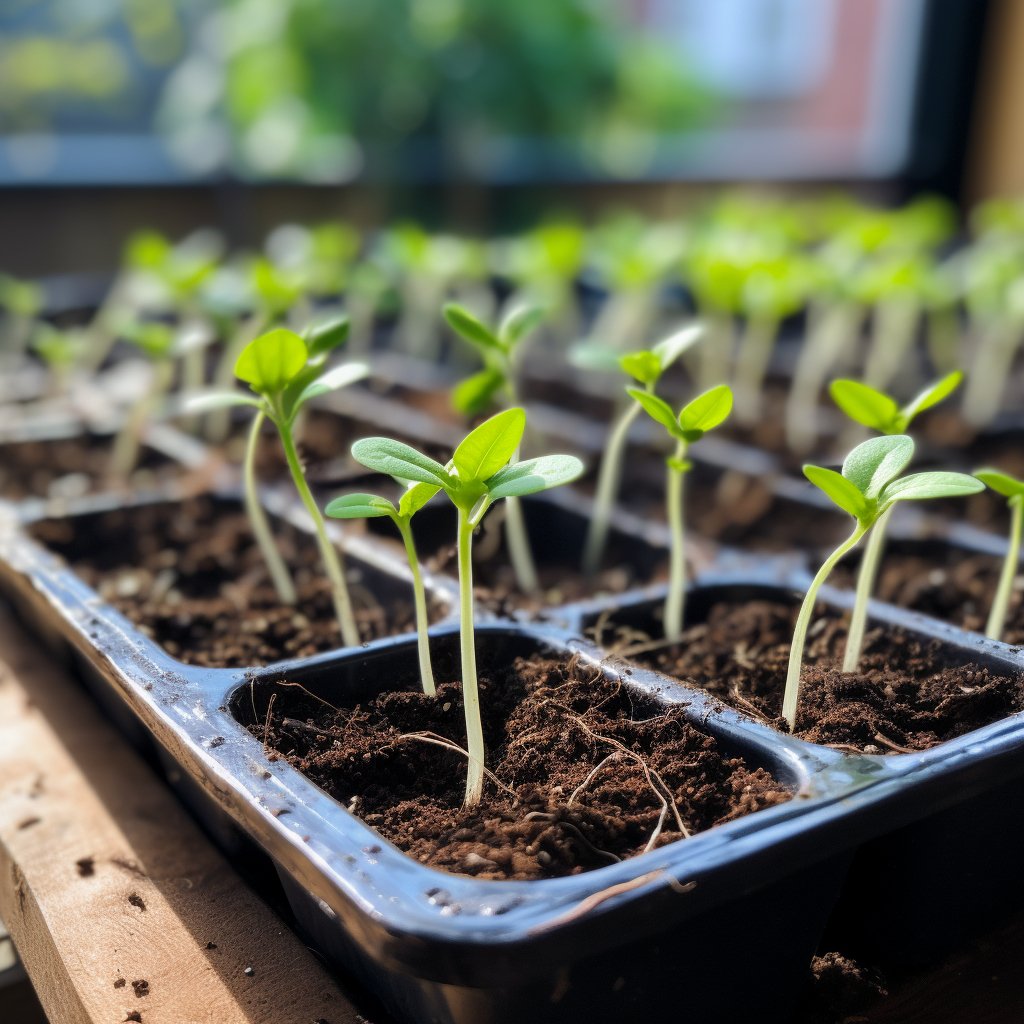From Seed to Success: A Complete Guide to Propagation
Seedling propagation is a cornerstone of gardening, offering the joy of watching a plant grow from its earliest stages. This guide aims to provide you with essential knowledge and techniques to successfully propagate your seedlings, whether you're just starting out or looking to refine your skills.
Key Steps and Tools for Effective Seedling Propagation
1. Selecting and Preparing Your Seeds
- Seeds: The first step in successful seedling propagation is selecting high-quality seeds. Each seed carries a unique genetic code, which determines the plant's potential growth and characteristics.
- Genetics and Phenotypes: It's important to recognize that seeds can exhibit various phenotypes - different expressions of their genetic makeup. This understanding can guide you in choosing seeds that are most likely to thrive in your specific gardening conditions.
2. Creating the Right Environment
- Sterilization: Maintaining a sterile environment is crucial for successful seedling propagation. Using a diluted hydrogen peroxide solution helps in effectively cleansing containers and tools, significantly reducing the risk of disease and contamination that can hinder seedling growth.
- Environment: Creating an ideal environment for seedling growth goes beyond just cleanliness. Factors like temperature, humidity, and light play a pivotal role. Ensuring a consistent, warm temperature and adequate humidity levels are key for seed germination and early growth.
3. Planting Your Seeds
- Propagation Plugs: Ideal for seed starting, propagation plugs offer a stable and nurturing environment for young seedlings, facilitating easier and more successful transplantation later on.
- Soilless Mixes: Another excellent option for planting seeds is using soilless mixes. These mixes, often composed of peat, vermiculite, or coconut coir, provide a well-draining, nutrient-rich medium that is perfect for seed germination and early root development.
- Makeup Pad Germination Technique: An innovative and cost-effective method for germinating seeds is using makeup pads. This technique involves placing seeds between damp makeup pads and placing that in a plastic bag. This method provides an ideal moisture level and a stable environment for germination. The transparency of the pads also allows for easy monitoring of the germination process and root development, making it easier to transfer the sprouted seeds with minimal disturbance.
4. Optimizing Germination Conditions
- Heat Mats and Humidity Domes: These tools can significantly improve germination rates. Heat mats ensure a consistent temperature, while humidity domes maintain moisture levels, creating an ideal microclimate for seedlings.
5. The Role of Light in Seedling Growth
- Propagation Lights: The right lighting is crucial for healthy seedling development. Propagation lights offer a spectrum conducive to growth, particularly important in the early stages.
- Spectrum Consideration: The spectrum of light provided to seedlings is a critical factor in their development. Different stages of growth require varying light spectrums. Germination and seedlings grow best under white or purple grow lights.
6. Transplanting Your Seedlings
- Gentle Handling: Transferring seedlings to their next growing medium requires care. The key is to minimize root disturbance to ensure a smooth transition.
- Acclimatization Process: Gradually introducing seedlings to their new environment is crucial. This process, known as acclimatization, involves slowly adjusting the seedlings to the conditions of their next growing phase, whether it's a different hydroponic system, soil, or outdoor environment. Proper acclimatization reduces stress on the seedlings and improves their chances of thriving in their new setting.
7. Maintaining Healthy Growth
- Nutrient Solutions and pH Management: As seedlings grow, they require different nutrients. Using a balanced nutrient solution and maintaining the correct pH is critical for healthy plant development.
- Regular Health Checks: Consistent monitoring of seedling health is essential. This includes checking for signs of nutrient deficiencies or overfeeding, monitoring for pests and diseases, and ensuring that the seedlings are developing properly. Early detection and intervention can prevent minor issues from becoming major setbacks in plant growth.
Best Practices for Seedling Propagation
- Know Your Plant Varieties: Different plants have specific needs in terms of light, temperature, and moisture. Tailoring your approach to each type of plant will yield better results.
- Keep Detailed Records: Tracking the progress of your seedlings can provide valuable insights for future propagation efforts.
- Consistency in Care: Regular monitoring and adjusting of environmental conditions are crucial for the health of your seedlings.
Conclusion
Mastering seedling propagation is a rewarding process that enhances your gardening experience. By understanding the needs of your seedlings and providing the right conditions, you can enjoy the satisfaction of nurturing plants from their very beginning. Remember, patience and attention to detail are key components of successful propagation.

